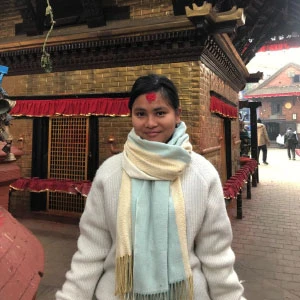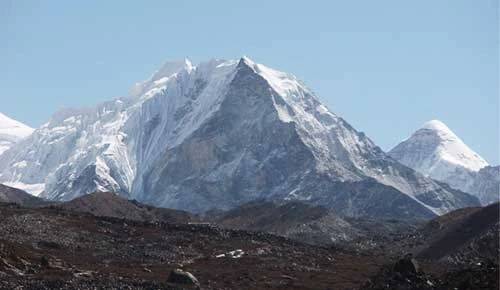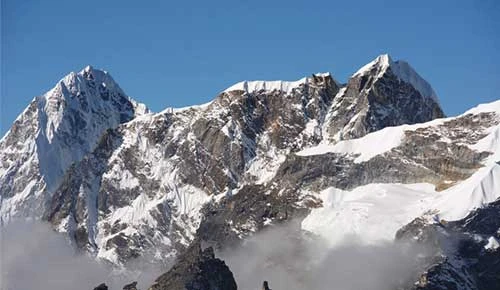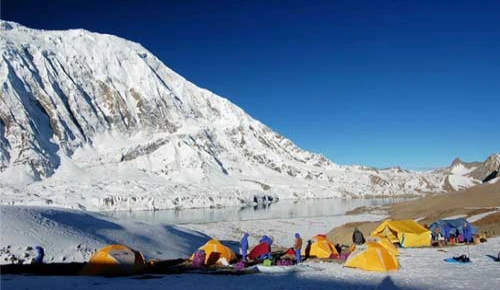Complete Guide for Mera Peak Climbing in Nepal
Introduction: Stepping Toward Nepal’s Lofty Heights
Mera Peak stands as one of Nepal’s most remarkable trekking peaks, offering climbers a rare blend of adventure, cultural immersion, and unmatched Himalayan scenery. At an altitude of 6,476 meters, it is the highest trekking peak in Nepal, attracting both aspiring climbers and seasoned mountaineers who wish to experience the thin air above 6,000 meters without tackling a technically demanding mountain.
Mera peak is an exploration through quiet Sherpa villages, dense rhododendron forests, and glaciers that open to panoramic views of Everest, Lhotse, Makalu, Cho Oyu, and Kanchenjunga. Mera Peak provides a true Himalayan experience, combining manageable challenge and rewarding beauty, making it one of the best introductory climbs in Nepal.
Where Is Mera Peak Located?
Mera Peak lies in the remote region of the Khumbu (Everest) area of eastern Nepal, south of Mount Everest and within the Makalu Barun National Park. The trail to Mera Peak begins from Lukla, the same gateway used for the Everest Base Camp trek, but it quickly diverts into quieter valleys and serene alpine landscapes.
The region is less crowded compared to the popular Everest trails, providing an intimate connection with nature and the mountain environment. The trek passes through lush forests, high alpine meadows, and glacial moraines, with the final ascent offering a view of five of the world’s 8,000-meter peaks, a sight few other routes can match.
Highlights of Climbing Mera Peak
- Offers panoramic views of five of the world’s highest peaks: Everest, Lhotse, Makalu, Cho Oyu, and Kanchenjunga.
- Provides an excellent introduction to high-altitude mountaineering for beginner climbers.
- The trekking route passes through remote and peaceful valleys away from crowded trails.
- Experience authentic Sherpa and Rai culture in traditional Himalayan villages.
- Opportunity to cross glaciers and snowfields, adding an adventurous climbing element.
- High success rate due to gradual acclimatization and non-technical terrain.
- Combination of trekking, camping, and climbing for a complete Himalayan experience.
- A sense of achievement and adventure comes from summiting Nepal’s highest trekking peak.
Each highlight adds to the reason Mera Peak is often called “the gateway to high Himalayan mountaineering.”
Table of Contents
Best Route to Mera Peak: How You Get There
The standard route to Mera Peak starts with a scenic flight from Kathmandu to Lukla. From there, the trail follows the less-traveled path through Chutok, Paiya, and Panggom before reaching Kothe and Thangnak. These villages allow trekkers to gradually adjust to the altitude while experiencing authentic Sherpa and Rai cultures.
From Thangnak, the route continues to Khare, the main base for acclimatization and training before the summit push. Climbers head toward Mera High Camp, which is located on the glacier's edge, following appropriate rest and basic climbing instruction. The summit day begins early in the morning with a gradual ascent on snow slopes leading to the central summit of Mera Peak.
An alternate route through Zatrwa La Pass provides a more direct path but involves a steep climb early in the trek. Many climbers prefer the longer route through Paiya and Kothe for better acclimatization and scenery.
Standard Mera Peak Climbing Itinerary: 20 Days
A well-structured itinerary is key to success on Mera Peak. Below is a general outline followed by most organized expeditions:
Day 1: Arrival in Kathmandu (1,400m) – Transfer and expedition briefing
Day 2: Sightseeing and preparation in Kathmandu
Day 3: Fly to Lukla and trek to Paiya (4–5 hrs, 2,730m)
Day 4: Trek to Panggom (6–7 hrs, 2,850m)
Day 5: Trek to Ramailo Danda (6–7 hrs, 3,276m)
Day 6: Trek to Chhatra Khola (6–7 hrs, 3,122m)
Day 7: Trek to Kothe (6–7 hrs, 3,600m)
Day 8: Trek to Thangnak (5 hrs, 4,356m)
Day 9: Acclimatization day in Thangnak
Day 10: Trek to Khare (4 hrs, 5,045m)
Day 11: Acclimatization and preparation day in Khare
Day 12: Trek to Mera Base Camp (4 hrs, 5,350m)
Day 13: Trek to Mera High Camp (4 hrs, 5,780m)
Day 14: Summit day, Mera Peak (6,476m) and descent to Khare
Day 15: Reserve/contingency day
Day 16: Trek to Kothe (6–7 hrs, 3,600m)
Day 17: Trek to Thuli Kharka (6–7 hrs, 4,200m)
Day 18: Trek to Lukla (7–8 hrs, 2,800m)
Day 19: Fly back to Kathmandu
Day 20: Final departure
Mera Peak Climbing Cost in Nepal
The overall cost of Mera Peak Climbing in Nepal typically ranges between USD 2,200 and USD 3,500 per person, depending on the service level, season, and group size. This total includes trekking permits, guides, accommodation, meals, domestic flights, and climbing support.
To give you a clearer picture, here’s a detailed breakdown of the estimated expenses involved in a standard Mera Peak expedition package:
Category | Inclusion/Description | Approximate |
Trekking & Climbing Permits | Makalu Barun National Park Permit + Mera Peak Climbing Permits (seasonal rates) | 200-300 |
Domestic Flights | Round-trip Kathmandu-Lukla-Kathmandu airfare | 360-400 |
Accommodation (Trek + Kathmandu) | Tea house stays during trek 3-star hotel in Kathmandu (2nights) | 250-350 |
Meals During Trek | Breakfast, lunch, dinner, and hot drinks throughout the trek | 250-300 |
Climbing Equipment (Group Gear) | Ropes, tents, cooking equipment, high-altitude gear provided by operator | 100-150 |
Personal Equipment Rental | Crampons, harness, ice axe helmet, down jacket (if rented in kathmandu) | 100-200 |
Guide & Porter Service | Licensed climbing guide trekking guide and porter support | 400-500 |
Transportation & Airport Transfers | Private vehicle for airport and hotel transfers in kathmandu | 40-60 |
Insurance (Personal) | High-altitude insurance covering helicopter evacuation | 150-200 |
Tips & Personal Expenses | Recommended tips for guides, porters, and personal use | 100-150 |
Miscellaneous Costs | Wi-Fi, charging snacks, souvenirs, and extra hot showers | 50-100 |
Estimated Total Cost: USD 2,200–3,500 per person
This estimate covers most essential services for a complete Mera Peak expedition. Costs can vary based on group size, comfort preferences, and travel season. Group departures tend to be more cost-effective, while private expeditions provide a higher level of flexibility and personalized support.
Difficulty Level: How Hard Is Mera Peak?
Mera Peak is often considered a non-technical climb, making it suitable for physically fit trekkers with basic mountaineering knowledge. However, the altitude, long days, and cold conditions make it a serious challenge.
The climb involves trekking on snow slopes with moderate gradients and requires the use of crampons, harnesses, and ice axes. Climbers also need to cross glaciers and navigate crevassed areas, usually roped together for safety.
Physical preparation is crucial. We strongly recommend regular cardio training, trekking practice, and leg-strength exercises several months before the expedition. The greatest challenge is altitude rather than technical difficulty, so proper acclimatization and steady pacing are essential to reach the summit safely.
Best Time to Climb Mera Peak
The best seasons to climb Mera Peak are spring (March to May) and autumn (September to November). During these months, the weather is stable, skies are clear, and temperatures at higher altitudes are moderate for climbing.
Spring brings colorful rhododendron forests and great visibility, while autumn offers crisp air, post-monsoon clarity, and dry trails. Winter climbs are possible for experienced mountaineers, but expect frigid temperatures and unpredictable weather. People generally avoid the monsoon months from June to August due to heavy rain and poor visibility.
Required Gear and Equipment Checklist
When preparing for Mera Peak Climbing, having the right technical gear is crucial for safety and performance in the high-altitude environment. Unlike regular trekking, peak climbing requires specialized equipment designed for glacier travel and basic mountaineering. These tools ensure stability, grip, and protection during the summit push across ice and snow terrain.
Essential technical gear includes crampons for traction on icy slopes, an ice axe for balance and self-arrest, and a climbing harness for attaching to fixed ropes during steep sections. Mountaineering boots compatible with crampons are mandatory to keep feet warm and secure in extreme cold. Other vital items include a helmet for rock or ice fall protection, carabiners, descenders (ATC or figure-eight), ascenders (jumar), and ropes, usually provided by your guiding company. A climbing rope system and prusik cords are used for safety on crevassed glaciers, while gaiters, gloves, and climbing goggles add essential comfort and protection.
While most technical climbing gear can be rented in Kathmandu or Lukla, personal items like boots and gloves should be of high quality and personally fitted. For a complete breakdown of both trekking and personal items, covering clothing layers, accessories, and daily essentials, you can explore our Nepal Packing Checklist guide for a comprehensive preparation checklist before your climb.
Accommodation and Meals During the Trek
Accommodation during the Mera Peak trek combines teahouses and camping. Up to Khare, trekkers stay in cozy teahouses offering twin-sharing rooms with basic bedding. The atmosphere is warm and social, with common dining areas serving freshly prepared meals.
Above Khare, the expedition switches to camping mode at high altitude. Tents are set up at High Camp, equipped with sleeping mats and warm meals prepared by the climbing crew. Typical meals include rice, lentils, pasta, soups, vegetables, and tea, designed to provide energy and maintain hydration during the climb.
Safety Tips and Guide Support
Climbing Mera Peak requires experienced guidance. A licensed climbing guide ensures proper route management, rope fixing, and altitude monitoring. Acclimatization is crucial; most teams include extra rest days to minimize the risk of altitude sickness.
Other essential safety tips:
- Always trek with a reputable company registered with the Nepal Mountaineering Association.
- Carry travel insurance that covers helicopter evacuation.
- Stay hydrated and follow a slow, consistent pace.
- Monitor weather conditions closely, especially before summit day.
With the right guidance and preparation, Mera Peak is a safe and achievable adventure for motivated climbers.
Why Choose a Local Trekking Company?
Choosing a local trekking company in Nepal ensures expert guidance, transparent pricing, and reliable logistics. Local guides have in-depth knowledge of the terrain, culture, and weather patterns, which enhances safety and enriches the journey.
Companies like Nepal Trek Adventure provide professional support from the moment you land in Kathmandu, handling permits, equipment, transportation, and accommodation. Local expertise ensures authentic experiences, smooth coordination, and the confidence of climbing under experienced supervision.
Conclusion
Mera Peak Climbing in Nepal is an extraordinary Himalayan journey that combines the spirit of adventure with breathtaking scenery and cultural richness. It’s a climb that challenges the body while deeply rewarding the soul; standing atop Mera Peak, you are surrounded by the highest giants of the earth. For trekkers and mountaineers dreaming of their first 6,000-meter summit, Mera Peak offers the perfect blend of adventure, safety, and satisfaction. With the right preparation and guidance, this climb becomes an unforgettable milestone in your mountain journey.
Begin your Mera Peak Climbing adventure with Nepal Trek Adventure, your trusted local partner for safe, guided, and successful Himalayan climbs.








